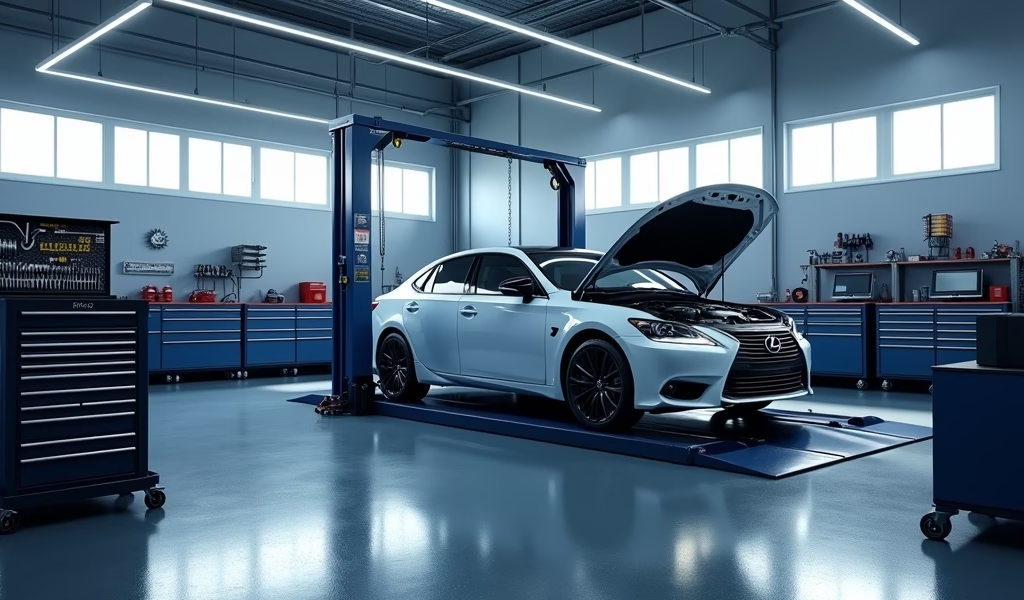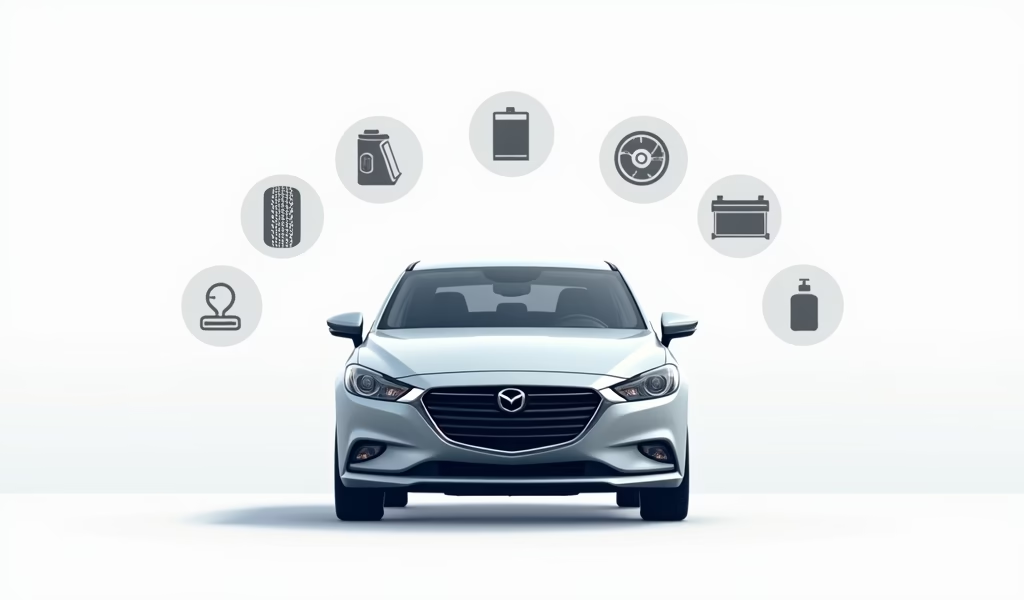Overview
This article presents seven essential car maintenance tips that can extend vehicle lifespan to 200,000+ miles, including following the owner’s manual schedule, regular oil changes, tire maintenance, fluid checks, battery care, brake system inspections, and seasonal maintenance. Regular maintenance not only prevents breakdowns and expensive repairs but also improves fuel efficiency, enhances safety, and significantly increases resale value.
Table of Contents
- Introduction to Car Maintenance Schedules
- Tip #1: Follow Your Owner’s Manual Service Schedule
- Tip #2: Regular Oil Changes – The Lifeblood of Your Engine
- Tip #3: Routine Tire Maintenance
- Tip #4: Fluid Level Checks and Changes
- Tip #5: Battery Maintenance
- Tip #6: Brake System Care
- Tip #7: Seasonal Maintenance Checks
- The Benefits of Following a Maintenance Schedule
- Frequently Asked Questions
Introduction to Car Maintenance Schedules
Ever wondered why some vehicles hit 200,000 miles with minimal issues while others seem to fall apart after 100,000? The difference often comes down to one thing: following a proper car maintenance schedule. As a master technician with over 15 years in the field, I’ve seen firsthand how regular maintenance can dramatically extend a vehicle’s lifespan.
Think of your car like your own body—preventative care is always better than emergency treatment. Just as you wouldn’t wait until you’re seriously ill to see a doctor, your vehicle deserves consistent attention before problems arise. A well-maintained car not only lasts longer but performs better, uses less fuel, and ultimately saves you thousands in repair costs.
Let’s dive into seven proven maintenance tips that will keep your ride humming smoothly for years to come. These strategies form the backbone of any effective car maintenance checklist and apply to virtually any vehicle on the road today.
Tip #1: Follow Your Owner’s Manual Service Schedule
Your vehicle’s owner’s manual isn’t just extra weight in your glove compartment—it’s the single most valuable resource for proper maintenance. Car manufacturers invest millions in testing to determine exactly what your specific make and model needs and when it needs it.
The manual outlines critical service intervals for essential maintenance tasks like:
- Oil and filter changes (typically every 5,000-10,000 miles)
- Air filter replacements (generally every 15,000-30,000 miles)
- Spark plug changes (usually every 30,000-100,000 miles)
- Timing belt replacement (often between 60,000-100,000 miles)
- Transmission service (typically every 30,000-60,000 miles)
These aren’t arbitrary suggestions—they’re carefully calculated recommendations based on extensive testing. Following these intervals helps prevent the most common causes of premature engine wear and component failure.
Pro tip: Create a simple maintenance log in your phone or a small notebook. Record each service, the date, mileage, and what was done. This documentation not only helps you stay on track but also significantly boosts resale value when you can show prospective buyers your vehicle’s complete service history.

Tip #2: Regular Oil Changes – The Lifeblood of Your Engine
If there’s one aspect of preventative car maintenance you should never neglect, it’s regular oil changes. Your engine contains hundreds of moving metal parts that would quickly destroy each other without proper lubrication. Fresh oil is quite literally what keeps your engine alive.
Modern oils do more than just lubricate—they clean, cool, and protect your engine from corrosion. As oil circulates through your engine, it picks up contaminants, gradually becoming less effective until it’s eventually too dirty to do its job properly.
While many newer vehicles can go 7,500-10,000 miles between changes with synthetic oil, several factors might warrant more frequent service:
- Frequent short trips (under 10 miles)
- Extreme temperature conditions (very hot or very cold climate)
- Stop-and-go driving in heavy traffic
- Towing or hauling heavy loads
- Driving in dusty environments
Warning signs that you need an oil change regardless of mileage include:
- Engine running louder than normal
- Oil appears dark and gritty on the dipstick
- Oil pressure warning light illuminates
- Burning oil smell inside the cabin
Research from Edmunds indicates that while many vehicles can safely go longer between oil changes than traditionally thought, regular changes remain the most cost-effective insurance for long engine life. When in doubt, follow your manufacturer’s recommendations for your specific driving conditions.
Tip #3: Routine Tire Maintenance
Your tires are literally where the rubber meets the road, making them critical for both safety and performance. Properly maintained tires not only prevent accidents but also improve gas mileage and ensure a comfortable ride.
The cornerstone of regular car maintenance includes these tire care essentials:
Monthly pressure checks: Use a quality gauge to check tire pressure when tires are cold (before driving). The correct pressure isn’t found on the tire itself but on the driver’s door jamb sticker or in your owner’s manual. Underinflated tires waste fuel and wear prematurely, while overinflated tires provide a harsh ride and reduced traction.
Regular rotation: Have your tires rotated every 5,000-8,000 miles to ensure even wear. Front and rear tires wear differently due to steering forces and weight distribution, especially in front-wheel-drive vehicles.
Alignment checks: Get your alignment checked annually or if you notice your vehicle pulling to one side, uneven tire wear, or a steering wheel that’s off-center when driving straight. Proper alignment extends tire life and improves handling.
Tread depth monitoring: Check tread depth regularly using the penny test—place a penny in the tread groove with Lincoln’s head upside down. If you can see the top of Lincoln’s head, it’s time for new tires. For winter driving, consider replacement at 4/32″ depth for better traction.
According to the National Highway Traffic Safety Administration, proper tire maintenance is one of the most effective ways to improve safety and fuel economy with minimal effort and cost.
Tip #4: Fluid Level Checks and Changes
Your vehicle relies on several different fluids to function properly, each with its own maintenance schedule. These fluids are the unsung heroes of your car’s performance and longevity.
Engine coolant: This prevents your engine from overheating in summer and freezing in winter. Check levels twice yearly and flush/replace according to your manual (typically every 30,000-60,000 miles). Low coolant is often the cause of mysterious overheating issues and can lead to catastrophic engine damage if ignored.
Transmission fluid: This specialized fluid lubricates and cools your transmission components. Check levels at every other oil change and change according to your manual—typically every 30,000-100,000 miles depending on your vehicle and driving conditions. Burnt-smelling or dark, cloudy fluid indicates it’s time for service.
Brake fluid: Brake fluid transfers force from your brake pedal to your brakes and must be kept clean and at proper levels. Check during oil changes and replace every 2-3 years, as it absorbs moisture over time which can cause brake failure. A spongy brake pedal often indicates air in the system or degraded fluid.
Power steering fluid: This helps you turn the wheel with minimal effort. Check monthly by locating the reservoir under the hood (usually labeled) and ensuring the level falls between the min/max marks. Groaning noises when turning typically indicate low fluid.
Windshield washer fluid: While not critical to engine function, this is essential for visibility and safety. Top off monthly with the appropriate seasonal fluid for your climate—winter formulas contain antifreeze properties to prevent freezing.
Creating a simple fluid check routine takes just five minutes but can prevent thousands in repair bills. I recommend a quick under-hood inspection once a month, ideally when filling up with gas.

Tip #5: Battery Maintenance
Your battery provides the electrical current that brings your vehicle to life. Without it, you’ve got a very expensive paperweight. Most car batteries last 3-5 years, but extreme temperatures can significantly reduce this lifespan.
Unlike some components that gradually deteriorate with obvious symptoms, batteries often fail suddenly and without warning. That’s why proactive maintenance is crucial:
- Inspect battery terminals regularly for corrosion (white or greenish powder)
- Clean terminals with a wire brush and baking soda/water solution if corrosion appears
- Ensure battery tie-downs are secure to prevent vibration damage
- Have battery health tested annually, especially before winter
- Consider a trickle charger for vehicles used infrequently
Warning signs of impending battery failure include:
- Slow engine cranking (that “ruh-ruh-ruh” sound before starting)
- Headlights dimming when idling
- Electrical components behaving erratically
- Dashboard battery warning light illumination
- Swollen or distorted battery case
Most auto parts stores will test your battery for free, making it easy to check its condition without special tools. If your battery is over three years old and shows any weakness during testing, consider replacing it before it leaves you stranded. This is especially important before road trips or as winter approaches.
Modern vehicles with start-stop technology and numerous electronic systems put even greater demands on batteries, making regular testing even more crucial for proper auto maintenance.
Tip #6: Brake System Care
Few maintenance issues are more critical to your safety than properly functioning brakes. This system works hard every time you drive and deserves careful attention during your maintenance routine.
Your vehicle’s brake system consists of several components that wear at different rates:
- Brake pads/shoes: The friction material that presses against rotors/drums to slow your vehicle. These typically need replacement every 30,000-70,000 miles depending on driving habits.
- Rotors/drums: The metal surfaces that brake pads press against. These can last through several pad replacements but eventually need resurfacing or replacement.
- Calipers/wheel cylinders: The hydraulic components that push the pads against the rotors/drums. These typically last the lifetime of the vehicle unless leaks develop.
- Brake fluid: The hydraulic fluid that transfers force from your pedal to the brakes. This should be flushed every 2-3 years as it absorbs moisture over time.
Warning signs of brake issues include:
- Squealing or grinding noises when braking
- Pulsation or vibration when pressing the brake pedal
- Vehicle pulling to one side during braking
- Brake pedal feeling spongy or going closer to the floor than usual
- Brake warning light illumination on dashboard
Unlike some maintenance that can wait a few hundred miles, brake issues should be addressed immediately. Even seemingly minor symptoms can rapidly progress to complete brake failure, especially during emergency stopping situations.
Regularly inspect your brake system during tire rotations and have a professional evaluation if you notice any of the warning signs above. Your safety is worth far more than the cost of brake maintenance.
Tip #7: Seasonal Maintenance Checks
Just as we change our wardrobes with the seasons, our vehicles need seasonal adjustments to perform their best year-round. Seasonal maintenance helps prepare your car for the specific challenges each time of year brings.
Spring Maintenance:
- Check air conditioning before summer heat arrives
- Replace winter-worn wiper blades
- Inspect cooling system for leaks after winter stress
- Check tire pressure as temperatures rise (pressure increases with heat)
- Apply a fresh coat of wax to protect paint from summer sun
Fall Maintenance:
- Test battery strength before cold weather hits
- Check heater and defrost functionality
- Install winter wiper blades if you live in a snowy region
- Consider switching to winter tires for improved traction
- Check all lights as visibility becomes more critical with earlier darkness
Different climate regions require specific attention:
- Coastal areas: Wash undercarriage regularly to prevent salt corrosion
- Desert climates: Pay extra attention to cooling system and battery health
- Cold regions: Consider using engine block heaters during extreme cold
- High-humidity areas: Watch for signs of mold in air conditioning systems
According to AAA’s automotive experts, seasonal preparedness is a key factor in preventing weather-related breakdowns, particularly during winter months when roadside assistance calls spike dramatically.
The Benefits of Following a Maintenance Schedule
Committing to a regular car maintenance schedule isn’t just about preventing breakdowns—it’s a strategic investment with multiple returns. Vehicles that receive consistent care routinely surpass 200,000 miles, while neglected ones often struggle to reach half that milestone.
The benefits of following your maintenance schedule include:
- Extended vehicle lifespan (potentially 200,000+ miles)
- Improved reliability and fewer unexpected breakdowns
- Better fuel efficiency (up to 10% better mileage)
- Significantly higher resale value
- Enhanced safety for you and your passengers
- Lower lifetime ownership costs
Consider this financial perspective: Regular maintenance might cost $800-1,000 annually, while a single major repair from neglect (like an engine or transmission replacement) can easily exceed $3,000-5,000. Prevention is always more affordable than crisis management.
Whether you’re a DIY enthusiast handling your own maintenance or prefer to trust professionals, establishing a consistent maintenance rhythm is the single most important factor in your vehicle’s longevity. Your car takes care of you every day—returning the favor through proper maintenance ensures many more miles of happy motoring together.
Start today by checking your owner’s manual, scheduling any overdue maintenance, and creating a simple calendar reminder system for future service intervals. Your future self (and wallet) will thank you!
Frequently Asked Questions
How often should I change my oil?
For conventional oil, every 3,000-5,000 miles is recommended, while synthetic oil typically lasts 7,500-10,000 miles. Always follow your vehicle manufacturer’s recommendations in your owner’s manual for the most accurate intervals.
What maintenance should I do every 30,000 miles?
The 30,000-mile mark typically requires air filter replacement, fuel filter replacement, and thorough brake inspection. Your owner’s manual will outline specific requirements for your vehicle make and model.
Can I do car maintenance myself to save money?
Many routine maintenance tasks like oil changes, air filter replacements, and fluid top-offs can be performed by DIY enthusiasts with basic tools. More complex services like timing belt replacement or transmission service are best left to professionals.
How do I know if my car needs maintenance?
Warning lights on your dashboard, unusual noises or vibrations, reduced performance, and poor fuel economy are all indicators. Regularly check your owner’s manual for recommended service intervals based on your mileage.
What happens if I skip regular car maintenance?
Skipping maintenance leads to accelerated wear, reduced fuel efficiency, and eventually major component failures. What might have been a $50 oil change can turn into a $3,000+ engine replacement when maintenance is neglected.

